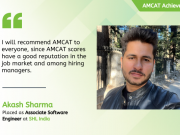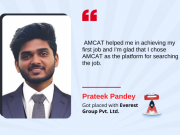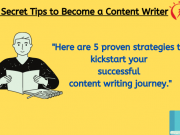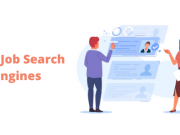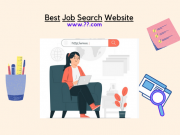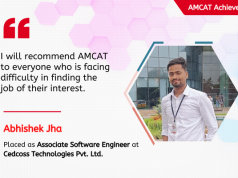Serial entrepreneur Omar Hamoui has spent his career founding and running mobile businesses, some of which have fared better than others. He founded and ran software consulting business Vertical Blue, before mobile photo sharing GoPix Inc., and foto chatter, a mobile photo-sharing social network.
Then came AdMob, one of the first and largest mobile advertising platforms, which Hamoui founded and at which he served as CEO. The company attracted Steve Jobs, who was interested in buying the business in 2009, but Hamoui held out for a better offer which came just a few months later, when he sold AdMob to Google for $750 million. Omar is now Partner at venture capital firm Sequoia Capital in California, where he focuses on mobile investments.
Newnham: What were you like growing up?
Hamoui: I grew up in Central California and was planning on being a doctor. That was the course I was supposed to be taking, but after about sixth grade, my family moved to Southern California and I eventually studied Computer Science at UCLA. I found I really enjoyed both the engineering and business side of the course, and that’s when I started looking at it more as a career path.
It was also right around the time that the internet started to take off. I graduated UCLA in 1998, and so certainly by my third and fourth year there, all these crazy web companies were being launched, like Amazon and Google. I was seeing, hearing, and reading all about them on the news, and that’s when I got really interested in the idea of business and technology combined.
Newnham: What was your first experience of technology as a child? Did your family own a computer?
Hamoui: Yes, I think my father bought us an Apple II computer when I was in third or fourth grade, and I always enjoyed using it and playing with it but I didn’t really start coding until I was in my senior year of high school.I liked it enough to take the course at UCLA, and there I realized pretty quickly that I wanted to run my own company.
My first company, which I started in 1998, was called Vertical Blue, Inc., and we offered consulting on software development for companies; it was website development and Flash. I started it in my senior year of college because I was getting a bunch of contracts, and so I started hiring some of my friends to do some of the work and ended up hiring about 20 people.
Vertical Blue existed until about 2001 because when the dot-com crash happened, a lot of our customers went out of business and we slowed down. Then I ended up joining Sony Pictures and about a year in, we were looking at some of the reports within Sony about how the images taken from camera phones were going to exceed images taken by analog and digital cameras combined. That’s what got me excited about the idea that camera phones were going to become so important, and yet there was no software or services written for them. So, a couple of my colleagues and I left Sony and started a company called GoPix, Inc., building software for Symbian devices, since Symbian devices were the only phones that would allow you to get API access to the camera at the time.
We basically built a photo-sharing app on Symbian that allowed you to add audio to the pictures, which then could be played back on a browser. It was very cool and used neat software, but we ran into a big distribution problem because in order to get distribution with anything on mobile at the time, you had to either get a carrier deal or a handset deal. Those were really the only two avenues to get distribution and, being only three people, we could get neither. We didn’t have contacts or connections, and I didn’t even know what the process of raising money would be like, so we did it for just over a year — then basically gave up because we couldn’t get the software out there.
After GoPix, I did a little bit of consulting for about five months, but then I thought some more about GoPix because at this point social networking was starting to take off. Facebook hadn’t started, but Friendster and LinkedIn certainly had so I thought, “Maybe the idea here is rather than focus on the software, I’ll build a mobile web service that allows people to share photos via a social graph.” So, I built a social network called fotochatter.
Again, it was a social network, around photos on mobile, but it went a little better. People could make friends and post a photo; then it would send a text message to all your friends which were essentially “following” you then they could see your photo and comment back. It was going reasonably well, but also, while I was working on that, I decided that if I was going to keep going back and forth between starting companies and getting real jobs, then maybe I should get an MBA. I felt that an MBA would be helpful in getting me further in my career, as it opened up other career avenues, and so I went to Wharton.
One of the things I discovered in my first year, was that I kept stumbling up against the same problems. Fotochatter had maybe 19,000 global users, but it wasn’t growing as fast as I wanted. The whole site was based on WAP, so I thought probably the best thing to do would be to advertise — so I tried advertising online. I tried running ads on Google because there was no other way to do it, and I spent about 30¢ a click to get people to come to my website, and then on the website, I put them through this flow where I educated them and told them about the mobile opportunity and then they could go to the mobile site and use my service.
I spent about 30¢ a click and about 1% of the people finally made it to the mobile site and signed up — so that was $30 per user for a free service, which isn’t great. But then I started running ads on other websites that were more directed towards mobile enthusiasts — there were various chat boards and smaller discussion groups about WAP usage and stuff like that, so that got it a little better, but it still wasn’t that great. It became quite clear to me that the hard part wasn’t getting the click; it was that leap from web to mobile — the transition.
So, I figured I should advertise on mobile web, but there was no way to do it. I looked for any service that would allow me to do this on a self serve basis, but there wasn’t any, so then I thought I would just advertise directly on a mobile website. I tried to find any sort of listing of big mobile websites, and, again, there was literally nothing there. There were all these half-baked listings, where half of the sites listed were already gone, so it was really difficult. Ultimately, I ended up finding one mobile website that seemed to have a decent amount of traffic, and this was GetJar — so they were the company I first ran ads with.
GetJar was based in Eastern Europe and I emailed them saying I would like to run some ads on their site, and they said, “OK, nobody does that, but OK.” I said I would pay them a penny per click, so I gave them links and paid them a penny per click to run ads for fotochatter. Very quickly, I was getting a lot of traffic, and rather than 1% of people signing up, 10% of people were signing up. That penny per click and 10% meant my cost of acquisition went from $30 to 10¢, so that gap was obviously massive.
I thought, “I can either try and take advantage of this for as long as possible, and grow my social network as quickly as I can, or I can be the one who makes the market efficient in the first place.” From what I had seen, in general, looking at a lot of other opportunities on the internet and even talking about this in business school, these types of opportunities where creating market efficiency or being the one who brings the market to efficiency faster can actually be a really good-sized opportunity. So, I went back to GetJar and asked them, “If I sold ads for you, because I think there are probably other people like me, could I take a commission?” And they said, “Sure.”
At the time, I didn’t know what an ad network was. I thought of it as eBay for advertising because I didn’t realize that ad networks existed or how they worked. So I built a self-serve system that allowed people to buy advertising on GetJar and fotochatter; those were my first two publishers. The self-serve system also allowed people to sign up their own WAP sites. This was all built as a side project while I was at business school in 2005. I started it in the September of my first year and launched it in December so it took three months of work to launch the initial version of AdMob.
Newnham: How was that initial launch received? Some mobile bloggers picked it up pretty quickly didn’t they?
Hamoui: Well, there were a few people I had been in contact with via my
previous mobile enterprises, so I emailed a couple of bloggers — one of whom was Russell Buckley, who ended up being the first employee of AdMob.
To rewind a little bit, I had run enough companies that hadn’t done well, so before I built anything for AdMob and after I had talked to GetJar and they agreed I could get a commission, I talked to a friend of mine, Ian McCarthy, who was now working for a company called Orb Networks, and Orb had software that allowed you to stream media from your computer to mobile devices or laptops. It was like a software version of Slingbox, and since they wanted to stream media to mobile devices, I figured they could use customers who had mobile devices with data connections. So, I asked him, “If I had this system where you could advertise on mobile and therefore reach people with mobile devices with data connections, would you be interested in advertising?” And he said, “Sure. I could spend $1,000 on that.”
So when we launched AdMob, we had that $1,000, and the ads started running immediately, and I think we probably spent that $1,000 in two days, at two or 3¢ a click. It was very, very inexpensive, but there was a lot of traffic on GetJar and fotochatter put together, with click-through rates at that time at 6% or 7%. Users just hadn’t seen ads on mobile before, so there was a novelty to them as well.
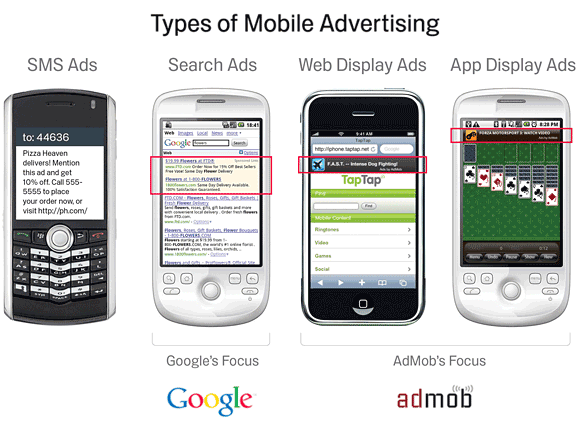
Other advertisers then started signing up, on a self-serve basis, and I remember telling my wife, “If I can get two or three people that I don’t know during this first week to actually put their credit card details into the system, then we’re really on to something,” and I think by the end of the week, I had four or five, so I was pretty excited.
It’s hard to appreciate now, but it was so simple at the time and so new and users were so interested in it that people couldn’t actually believe it worked the way it worked. Because if you put $50 into this system and you clicked “start,” your ads just started to work and you would see all the statistics live and your money would be gone in maybe twenty minutes, at most; probably ten minutes. Many people thought it was fake or that I was just taking their money, but they would look at their logs and they could see that, indeed, that user had clicked on the ad.
Newnham: When did you go for your first round of funding?
Hamoui: I didn’t actually go after funding because I didn’t know how to do that. I wasn’t from Silicon Valley, and I didn’t know anything about it or people there. But I started getting some emails from Nokia and other big companies, and, I would get excited because this had never happened to me with my other companies. Typically, I would email back and say, “Thank you so much. This is awesome. I am just one person, though, so I am fairly sure we can’t work together, but I will get back to you.”
But then, I started getting some emails from VCs, and that was amazing to me because I had no clue that it was even possible to have things happen this way. I would be on the phone to them while I was in Philadelphia, and they were mostly here in San Francisco, and, after a while, I noticed there was a lot of talking — but nothing further happened until one invited me out to the Valley on a Thursday after class. He introduced me to a number of other investors there because I think he was interested but wasn’t sure he wanted to do anything. I guess he was trying to drum up support and see what other people thought so, after two of these trips, I ended up having, essentially, a large group of people that would invest if somebody would lead. There were quite a few leaning forward, but no one was jumping forward.
It was really frustrating because I had all these dominoes in place, but nothing was falling. Also, it was March, 2006 — my first year of business school — and AdMob launched at the end of 2005, with its formal announcement in January, 2006. By May, I was meant to have an internship and hadn’t done anything about it because I had started AdMob, so I was getting nervous. But then, the VC and one other person I had met showed interest and actually sent me a term sheet — it was pretty one-sided in their direction, so I wasn’t really pleased with the terms, but the main thing that worried me was the fact that they wanted two board seats, which meant I only got one. They took a very hard line with that point which worried me because if I signed, the day afterwards, they could get rid of me based on the fact that they had two board seats.
I asked a friend of mine what he thought I should do. I also told him not to tell anyone about the proposal because it was very confidential and it had to remain a secret. I don’t know why it was sneaky and secret, but that was my understanding about how these things worked. It was Monday and the term sheet expired on Friday, so I had to decide quickly. He said he would think about it, and then he called me an hour or two later and said, “I’m really sorry. I know you told me not to tell anybody but… I told a friend of mine and that friend of mine knows someone at Sequoia and he talked to him, and they want to talk to you.”
Then, Jim Goetz from Sequoia called me. He had read everything about the company and basically laid out a deal that was much better than the previous offer I had received. He said, “If we were to make this offer, would you sign it?” I agreed so he suggested I fly out to meet them, which I did the next day. I flew on the Thursday and I met with Jim and the team, showed them a live ad campaign, and on Friday, literally twenty four hours after meeting, they gave me a term sheet.
It was 4pm and my other term sheet expired at 5pm, so I was taking all of this very seriously. My lawyer wasn’t answering his phone, so I just looked at it and I was like, “You know what? I am a business school student; this is Sequoia; I don’t really know what is in this term sheet; but how bad could it be?” The worst case was I could say I signed a term sheet with Sequoia. So, I just signed it. Within twenty minutes of getting it, I signed it. And that was that.
“If they had offered me a million dollars in cash, I would have absolutely sold it.”
Newnham: So, this was in May, having started the business in September the year before. That’s impressive. Were you amazed at how quickly it happened?
Hamoui: Yes, I started coding myself in September, and in the May after, I was funded and here. So, I was shocked, yes. Really, even starting to code in September and launching in January and then the term sheet in May was quick. And there were lots of adventures along the way… I met lots of interesting people and talked to a couple of companies who wanted to buy AdMob. And I would have sold it: they wanted to buy it for equity in their company, but if they had offered me a million dollars in cash, I would have absolutely sold it. I was a business school student, just one person, having coded for four months. Would you sell that for a million dollars? I would sell it for a million dollars.
Newnham: It ended up quite well that you didn’t sell for a million…
Hamoui: Yes, a lot of things ended up working out quite well.
Newnham: What were the key lessons you took from your previous businesses to AdMob?
Hamoui: First of all, I learned that when things are working, you’ll know they’re working, so I began to shift ideas quickly. In the beginning, it was like a labor of love, and I believed the normal business spiel of never giving up. It was easier to know when something was working than when it wasn’t. Like, when you’re pushing a boulder uphill, and then it runs downhill, you can feel it. But I think the people who have never experienced the downhill, even a little bit of downhill, don’t know. They think things are supposed to be that hard, and they are not. It shouldn’t be that hard to get the market to adopt or adapt to your product, if there’s a fit for it.
The second lesson was that I had done enough consumer stuff to know that I wanted to run a company that made money, so getting that first dollar through the door, and in this case, having an agreement from a buyer and a seller, and knowing that literally the second I turned AdMob on, I would make money.
“There were a lot of us that knew something big in mobile should have happened but hadn’t, and we also knew we could make it happen.”
Newnham: What impact did the launch of the iPhone have on your business?
Hamoui: AdMob had been around almost a year and a half when the iPhone was announced. It was announced in June, 2007, and prior to this, we had already tried to run ads inside of applications — J2ME and BREW applications — but they had never worked. There were latency issues and ad-serving issues. It seemed ads on the web were good and ads on mobile were bad; that was the lesson learned so, when the iPhone came out, we were pretty excited. Not because it was such a great, wonderful device or experience, but this was the first time, as we discussed previously, you could serve ads via JavaScript, so you didn’t have to do that crazy server thing anymore. We built a JavaScript SDK, and as we had always been device-agnostic, we built an iPhone SDK.
When the iPhone launched, there was no App Store, but it was announced eight or nine months later, so we went upon our way and we looked at how the iPhone was trending; click-through rates were good and everything, but it was not the be-all and end-all. Then, when Apple announced the App Store, we had a long, internal conversation because we knew that “apps were bad and web was good” and we wanted to know if we should even bother building an SDK for applications. Moreover, there were all these NDAs with Apple and you couldn’t share code, and we didn’t even know if an SDK was legal or if it would get approved in the App Store so we wondered if it was worth all this trouble.
We hadn’t been in applications yet, and we felt like these devices were different enough that when they announced the App Store in March, we were going to build a new set of Ad Units for the iPhone for applications and for the web at the same time — and that we would have a big announcement right around the time the App Store came out. So, the App Store launched on July 10, 2008, and we had been working on our SDK for those three to four months before, and, I think, on July 24th — two weeks later — we announced our iPhone Ad Unit.
In-app Ad Units, web Ad Units — anything you could do on the iPhone, we had an Ad Unit for, basically. Some clicked to maps; some clicked to the App Store; some clicked to this; some clicked to that. Even the notion of running an ad into the App Store so that people could advertise apps was new; no one had done that before. We had no competition. I don’t think our next competitor got there with ad units for maybe another six months.
Shortly after we launched the Ad Units, just the traffic that was coming — the dollar volume that was being spent — indicated to us that this was not an extension of the line of the vector that we were on. This was a whole new thing, so we had an internal company meeting, and I remember it because I made the decision, somewhat pushing away slightly from what the management team wanted, I decided we were done with WAP, even though 95% of our business was on WAP, and that everything moving forward would be for the iPhone. So, we were going to devote zero energy to WAP — which was a controversial thing to say, but in the company meeting… have you ever seen the movie Apocalypto?
Newnham: No, I haven’t.
Hamoui: I haven’t seen it either, actually, but I know the plot. My understanding is it’s a movie about Mayans — a Mayan warrior and his struggles and the conflict between these Mayan tribes, and at the very end of the movie, after all the conflict and battles, they just see on the coast, the Spanish galleons landing. So everything they had done previously was completely irrelevant — all the battles and conflicts, and that’s what I told the company.
Everyone was worried what would happen if we abandoned WAP because we would be competing with all these different people, but I just said that we were going to do this because it just didn’t matter anymore. And other than starting the company, that was probably the most pivotal decision we made because it meant we were first, and far and away the fastest, and the most successful network at the time on the iPhone.
Newnham: Can you talk me through the process that led to AdMob being acquired by Google?
Hamoui: I don’t know how much I can say due to NDAs, but I will give you an overview. The whole process started in January or February, 2009, when I was in a meeting and the office manager came and said, “I have a call for you.” I told her I was in a meeting and she was like, “Yes, I know, but it’s Steve Jobs.” Funnily enough, he had actually sent me an email a few weeks before, but I never saw it because it went into my spam folder!
Anyway, he had just called the main office line, so I got on the phone, and he said, “Hi, Omar, this is Steve Jobs. How are you? I really like what you’re doing with AdMob, and I wondered if you would like to come by my house and chat about it?” I said, “Sure,” so he gave me his address, and I went to his house that evening.
That evening, we talked about the business, and Steve said he was really interested in what we were doing and that he would like us to come on board but, the terms weren’t great. We discussed it some more over a period of time but we could never agree on terms. He basically wanted to pay less than we thought it was worth so we weren’t prepared to sell. It was actually a really draining time because with a big company like Apple, you would have expected to deal with the mergers and acquisitions team, but it was just Steve. It was literally me and Steve going back and forth, and that made it draining, not because of him but because of the situation. That was the great thing about Steve, though: despite Apple being such a big company, he tried to keep the business like a startup.
Soon after the deal fell through, we had emails from Google, who also expressed an interest in the business. Following what had happened with Apple, we were a lot more assertive in terms of what we wanted and explained that if a deal was to be done, we would want certain terms and for it to be completed by a certain date. We were very much like, “If this is going to happen, it has to move at a decent speed.”
Luckily, they were really flexible and accommodating, and I think a deal was drawn up within a week of them approaching us. However, once the deal was in place, rather than celebrating, we got hit with a second review from the F.T.C. (Federal Trade Commission), who wanted to review the deal again because we were in the mobile advertising space and Google’s position within advertising meant they were concerned about how our joining forces could hurt competition in the same field.
The review meant we had eight months of limbo that ended up being really hard because we didn’t know what was going to happen, and I just wasn’t prepared for it. I also wasn’t knowledgeable in this area because it was out of my remit, going back and forth to Washington. I had gone from an overwhelming high to a crushingly disappointing low, which was extremely frustrating. As an entrepreneur, I really felt that this was not what I had signed up for.
Newnham: Did this contribute to you leaving Google so soon after the deal was completed?
Hamoui: Once we joined Google, and after the eight-month review period with the F.T.C., the euphoria had waned. Everyone involved with the review from AdMob said it was the most stressful time, and it definitely affected how we felt once we were integrated into Google.
Also, by then, the business had had to carry on, and we had done OK. During that time, we couldn’t say we were part of Google yet, so we had to carry on as we were, and we grew the company and gained more traction and customers. In fact, we did so well that I questioned whether we actually needed to have done the Google deal, not because it wasn’t good but more that we were able to grow the company anyway.
Also, once we were in Google, there were various layers of management that were brought together for collaboration, and I felt like I wasn’t needed. There were people doing the jobs that I had done, and so I felt I wasn’t required in order to take the business further. Google wasn’t exactly happy about it, but they understood, and that’s why I left.
“Value is always in the execution — and that is best. You can have an idea, but executing it well is what matters.”
Newnham: What lessons do you think you learned from running and selling AdMob?
Hamoui: I learned several. One being that value is always in the execution — and that is best. You can have an idea, but executing it well is what matters. Another was about being coherent from start to end. AdMob never pivoted; it remained the same from the start.
We also believed in values. Once you gain traction, get moving but always hold on to your values. It’s really important to remain consistent. We always treated customers and clients the same, and our technology did what it said, and always delivered what was promised.
Culture is very important, too, and shouldn’t be overlooked. Once you get past, say, 70 staff, people can’t and won’t look to just one leader to lead the culture. People used to tell me how important it was to tell your staff about the culture of the business, and I never got that, but once we grew really big, I totally did.
Newnham: If you could, what advice would you offer a younger Omar pre-AdMob?
Hamoui: Enjoy the experience of running a successful startup, as it’s a once-in-a-lifetime experience. Don’t wait until it’s too late to enjoy it, as you may only do it once. Some entrepreneurs go on to achieve the same success over and over again, maybe even three or four times over, but that’s rare. It’s rare because it’s not just you who does it. It’s a whole team that creates something special, and getting that type of team together again doesn’t always happen.
I guess it’s like most things in life: it goes too fast, so stop and savor it for a bit. I was always too stressed or too busy moving on to the next thing to enjoy it as much as I could have.
(This article originally appeared on Medium)




